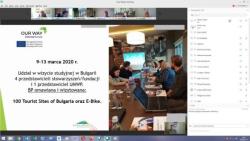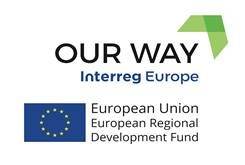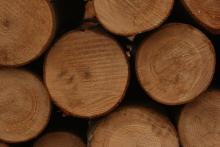 Asset Publisher
Asset Publisher
Polish forests
Poland is in the European lead, while concerning the area of all forests. They cover about 29,2 % of the country territory, and grow within the area of 9,1 million hectares. The overwhelming majority of the forests is state owned, of which almost 7,6 million hectares are managed by the State Forests National Forest Holding..
The number of Polish forest is still growing. The forestation rate of the country has increased from 21 % in 1945 to 29,2 % at the moment. Between 1995 and 2008, the forest area increased by 310 thousand ha. The basis for afforestation works is the "National Programme for Increasing the Forest Cover" (KPZL), assuming an increase of the forestation rate up to 30 % by 2020 and up to 33 % by 2050. Polish forests abound in flora, fauna and fungi. 65 % of the total number of animal species live there.
The forests grow in our country on poor soils, mainly because of the development of the agriculture in previous years. It influences the distribution of the types of the forest sites in Poland. Over 55 % of the forest areas is covered with coniferous forests. In other areas, there are forest sites, mainly the mixed ones. Their small part constitute alder and riparian forests – not more than 3 %.
In the years 1945 – 2011 the area of natural deciduous tree stands within the area of the State Forests National Forest Holding increased from 13 to 28,2 %.
Within the lowlands and uplands the most often occurring tee species is pine. It covers 64,3 % of the forest area of the State Forests National Forest Holding and 57,7 % of private and commune forests. In the mountains the predominant species is European spruce ( in the west) and European spruce with beech (in the east). Domination of pine is the result of carrying on sustainable forest management in the past. Once, the monocultures (crops or cultivations of one species) were the answer to the great demand of industry for wood. Such forests appeared to be quite fragile to climatic factors. They also were often the prey of pests' expansion.
In Polish forests, the share of other tree species, especially deciduous trees have been systematically increasing. The foresters have stepped aside from monocultures – that is why, they try to fit specific species of the forest stand to the natural stand, that would be proper for the given area. Thanks to that, in the years 1945 – 2011, the area of the deciduous tree stands within the lands of the State Forests National Forest Holding increased from 13 to 28,2 %. There occur more and more frequently the following tree species: oaks, ashes, maples, sycamore maples, elms, but also birches, beeches, alders, poplars, hornbeams, aspens, tilias and willows.
Our forests are the most often represented by the forest stands aged 40 to 80 years. The average age of the forest equals 60 years. More and more trees are of big size at the age over 80 years. Since the end of the Second World War, the forests' area has increased up to almost 1,85 million hectares.
Raport o stanie lasów w Polsce 2012
 Asset Publisher
Asset Publisher
Rowerowe trasy przez lasy
Rowerowe trasy przez lasy
Rodzi się pomysł ułatwiający życie turystom rowerowym w regionie. Projekt „Zachowanie i promocja dziedzictwa przyrodniczego i kulturowego poprzez Zielone Szlaki (OUR WAY)” zakłada rozbudowę infrastruktury służącej cyklistom przemierzającym trasę z Przemyśla przez Ustrzyki Dolne i Górne, aż do Cisnej. Partnerami w projekcie są nadleśnictwa z terenu RDLP w Krośnie.
Realizowany jest on w międzynarodowym partnerstwie, które obejmuje 6 regionów:
- Murcia Region (Hiszpania – partner wiodący),
- Northern and Western Regional Assembly – Irlandia,
- Podkarpacie – Polska,
- Departmental Council of Herault – Francja,
- Hajdú-Bihar County Government – Węgry,
- Chamber of Commerce and Industry – Bułgaria.
Partnerem doradczym jest Europejskie Stowarzyszenie Zielonych Szlaków GREENWAYS (European Greenways Association) z Belgii. Projekt OUR WAY dofinansowany jest z Programu INTERREG EUROPA 2014-2020. Jego realizacja ma na celu zachowanie, ochronę, promowanie i rozwijanie dziedzictwa przyrodniczego i kulturowego w Europie, zgodnie z ideą Greenways.
Cel projektu zostanie osiągnięty poprzez poprawę instrumentów polityki regionalnej, powiązanych z Regionalną Strategią Innowacji Województwa Podkarpackiego na lata 2014 – 2020 na rzecz inteligentnych specjalizacji, w tym poprawę narzędzi odpowiedzialnych za zarządzanie oraz promocję Greenways.
W ramach projektu powołana została Regionalna Grupa Robocza Interesariuszy projektu OUR WAY, która skupia przedstawicieli samorządów, związków i stowarzyszeń oraz przedsiębiorców zaangażowanych w rozwój eko-turystyki w województwie podkarpackim.
- Jako zarządzający obszarami leśnymi jesteśmy zainteresowani rozwojem turystyki rowerowej, mniej inwazyjnej dla środowiska od tej zmotoryzowanej – deklaruje Grażyna Zagrobelna, dyrektor RDLP w Krośnie. – Główna nitka projektowanego szlaku ma swoje odgałęzienia prowadzące drogami leśnymi, które - jeśli tylko to możliwe - będziemy udostępniać do modernizacji pod kątem oczekiwań rowerzystów. Podkarpacie to wymarzona kraina dla turystyki rowerowej, a leśne stokówki dają szanse na rozśrodkowanie ruchu turystycznego poza najcenniejsze przyrodniczo obszary.
W zasięgu RDLP w Krośnie projekt dotyczył będzie terenu nadleśnictw: Bircza, Cisna, Krasiczyn, Lutowiska, Stuposiany i Ustrzyki Dolne.
W środę 13 maja odbyło się IV spotkanie członków Regionalnej Grupy Roboczej Interesariuszy projektu OUR WAY. W związku z trwającą pandemią koronawirusa spotkanie zrealizowano w formule online z wykorzystaniem platformy Cisco Webex.
W obradach uczestniczyły 22 osoby.
Tematem spotkania było omówienie działań prowadzonych w 4 semestrze realizacji projektu OUR WAY oraz innych aktywności związanych z turystyką rowerową.
Przedstawiono relację z wizyty studyjnej w Bułgarii (Vratsa, Vidin) w dniach 09-13 marca 2020 r., pod kątem odwiedzonych miejsc turystycznych oraz możliwości transferu i adaptacji tych rozwiązań na Podkarpaciu.
Ponadto omówiony został stan realizacji projektu polegający na przygotowaniu dokumentacji technicznej i projektowej niezbędnej do rozbudowy sieci turystycznych tras rowerowych na terenie Bieszczad i włączenie ich do szlaku Green Velo (planowany przebieg, stan obecny, bariery realizacji itd.).
Członkom Regionalnej Grupy Roboczej Interesariuszy OUR WAY przedstawione zostały aktualne ustalenia dotyczące organizacji wizyt studyjnych online, terminu przygotowania Action Planu oraz działań, które zostały uwzględnione w projekcie tego dokumentu.
Ustalono, że zainteresowani członkowie Regionalnej Grupy Roboczej Interesariuszy projektu OUR WAY mogą wziąć udział w wizycie online na Podkarpaciu oraz prześlą swoje pytania dotyczące szczegółów Dobrych Praktyk zidentyfikowanych przez Partnerów projektu, które są inspiracją do działań w Action Planie Województwa Podkarpackiego.
Action Plan po zmianach wynikających z dyskusji z członkami Regionalnej Grupy Roboczej Interesariuszy projektu OUR WAY zostanie przesłany na adresy mailowe Interesariuszy przed jego przekazaniem do Lidera projektu.
Opr. EdM na podstawie materiałów Departamentu Gospodarki Regionalnej
Urzędu Marszałkowskiego Województwa Podkarpackiego


 fot. Paweł Fabijański
fot. Paweł Fabijański
 fot. Paweł Fabijański
fot. Paweł Fabijański
 fot. Paweł Fabijański
fot. Paweł Fabijański







